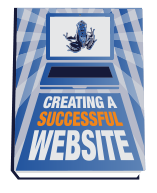There are many differences between static and dynamic websites. Appearance could potentially be very similar in some cases, but functionality couldn't be more different. There are advantages and disadvantages to both types when it comes to cost, effectiveness, audience reach, SEO benefits, usability and efficiency.
Static!
Static sites are usually more basic and low functioning than dynamic sites. They are cheaper and faster to host and develop initially, but you need to know some HTML and be able to update it manually page by page. Static sites are a series of HTML files with one file equaling one page of the site. Web pages are stored on the server in the same format that is sent to the web browser (HTML). Because the site needs to be updated manually one page at a time by the Webmaster, the content on these sites is oftentimes stagnant or fixed. This can mean that some information on these sites, if not updated consistently, can be outdated and not very useful. In fixed sites, the same information is displayed on the screen no matter who is viewing the page.
On the other hand, this type of site could be good for very small websites with few pages that need updating continuously. If you only have five to ten pages, for example, it wouldn’t be that difficult or time consuming to update each page. Classic, 5-page, and brochure websites can utilize a static site successfully. If the information is consistent, standard, and long lasting, a static site may be the way to go.
On the other hands, large sites with hundreds of pages or products that need to be updated often would be very difficult to maintain using the static site model. Updating would be very repetitive and tedious. So, while they might be cheaper to host and develop initially, you want to think about what the function and goal of your site is before you create a static site.
Dynamic!
Dynamic sites are highly functional, easy to update, and can be interactive. They usually take longer to develop and are more expensive. Unlike most static sites, dynamic sites can be updated by users with no HTML knowledge or background. Dynamic sites have features including content management systems, discussion boards, e-commerce systems, and dynamic publishing capabilities. When creating a dynamic site, the sky’s the limit. You can develop or update content easily, or the site can do it automatically. You can also make it interactive for visitors with search bars, comment boxes, etc.
A dynamic website is made up of a bunch of different pieces that come together and form a page. Unlike static sites, dynamic sites use server technologies, like PHP or JavaScript, for web development. These computer codes automatically create HTML and CSS “on the fly.” This means that when someone loads a dynamic web page, all the parts that make up that page will pull together and that is what is viewed. When you want one part of the site to be updated, such as the header or footer, you can change that one piece and it will appear across every page that contains that piece. So, overall, dynamic sites may be more costly and time consuming to create at the forefront, but they can make up for it a hundred times over down the road.
A Quick Look at SEO
Pages of dynamic sites can take longer than static sites to get indexed if not done properly. Search engines index unique pages and URLs. Some dynamic sites have many pages with very similar URLs. If a URL contains a character such as ?, &, or =, the search engine could trim off the end of the URL starting with one of those characters to make it more basic. This results in multiple variants of a page turning into one basic page, so those variants won’t be indexed. This can be easily avoided if done correctly. With both dynamic and static sites, you can potentially choose whatever URL you want.
Blue Frog Marketing
Now you know the overall purpose and function of both static and dynamic sites. Your website's main function should be to provide easy access to remarkable content for potential consumers. This concept is the foundation of the inbound marketing philosophy and is the driving force behind Blue Frog’s website design strategy.



